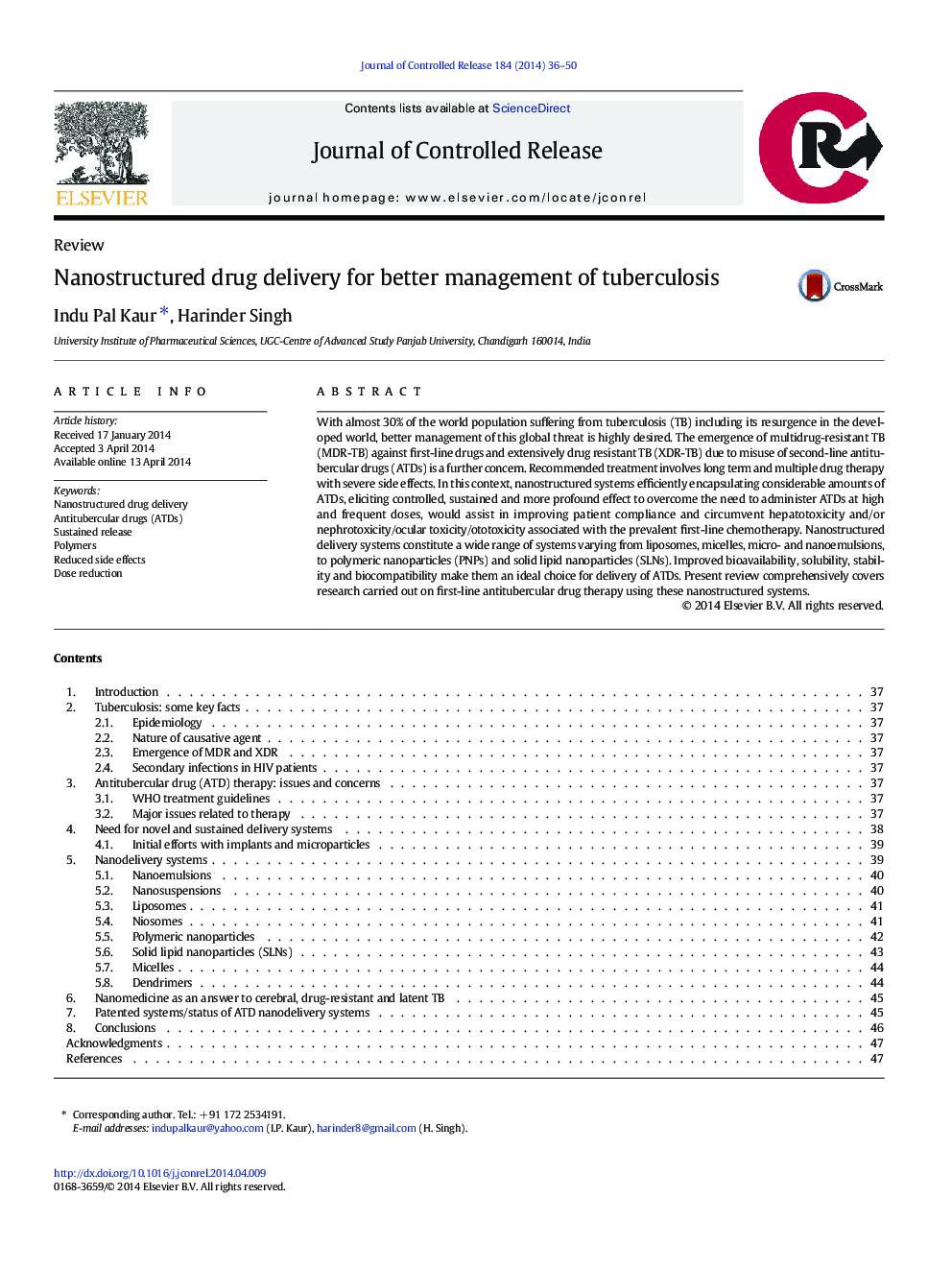| Article ID | Journal | Published Year | Pages | File Type |
|---|---|---|---|---|
| 1423976 | Journal of Controlled Release | 2014 | 15 Pages |
With almost 30% of the world population suffering from tuberculosis (TB) including its resurgence in the developed world, better management of this global threat is highly desired. The emergence of multidrug-resistant TB (MDR-TB) against first-line drugs and extensively drug resistant TB (XDR-TB) due to misuse of second-line antitubercular drugs (ATDs) is a further concern. Recommended treatment involves long term and multiple drug therapy with severe side effects. In this context, nanostructured systems efficiently encapsulating considerable amounts of ATDs, eliciting controlled, sustained and more profound effect to overcome the need to administer ATDs at high and frequent doses, would assist in improving patient compliance and circumvent hepatotoxicity and/or nephrotoxicity/ocular toxicity/ototoxicity associated with the prevalent first-line chemotherapy. Nanostructured delivery systems constitute a wide range of systems varying from liposomes, micelles, micro- and nanoemulsions, to polymeric nanoparticles (PNPs) and solid lipid nanoparticles (SLNs). Improved bioavailability, solubility, stability and biocompatibility make them an ideal choice for delivery of ATDs. Present review comprehensively covers research carried out on first-line antitubercular drug therapy using these nanostructured systems.
Graphical abstractFigure optionsDownload full-size imageDownload high-quality image (126 K)Download as PowerPoint slide
